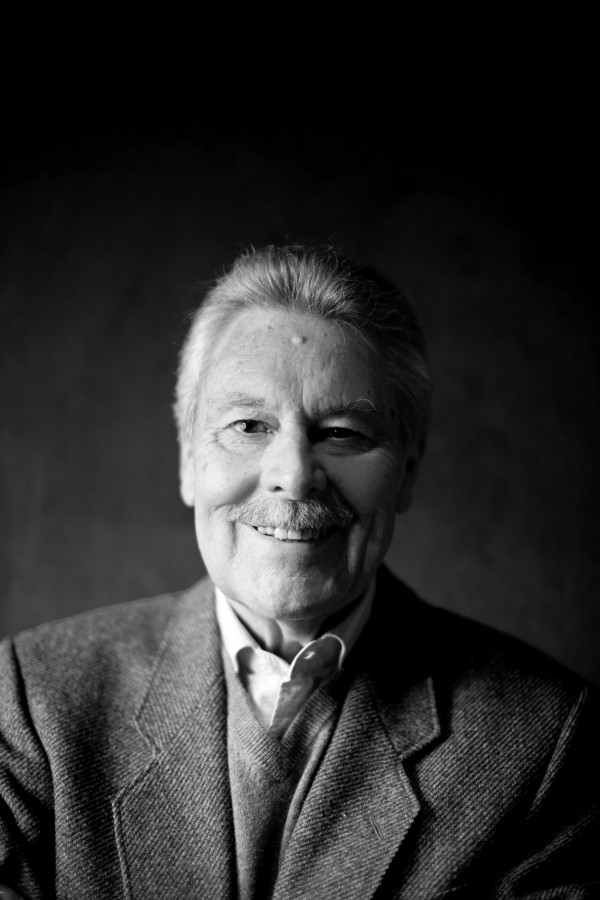
However, it would be with cartoons that he became famous by specialising in well-constructed plots. In 1948, for Bravo, he wrote his first scenarios for Tenas (Louis Saintels) and Rail (Raoul Livin): Capitaine Hardell, Cyprien Bravo, Le Bossu, Frigipolis, etc. He joined Tenas at Mickey-Magazine and wrote “Le Mystère de la Tour Eiffel”, a Parisian adventure of the famous Disney mouse, then, under the joint pseudonym of Daisin, the duo created a story about pirates, “Le Triangle de feu”, in Spirou (1952).
It was in this year that his writing career really took off after meeting the young Gilbert Gascard (Tibet), the cartoonist with whom he created his most famous work: the short-lived detective Dave O’Flynn in Heroic-Albums, then the investigations of Ric Hochet, various synopses for Chick Bill and Les Peur-de-rien, as well as many short detective stories illustrated by the cartoonist for Tintin and other weeklies.
In fact, it was from the end of the fifties onwards, after a long stay in the Belgian Congo, that he started to produce more stories for Tintin with various characters for Mittéï (Les 3 As, working with Tibet on the characters), Edouard Aidans (Bob Binn, Népomucère and Bobinet), Eddy Paape (Les Jeux de Toah, then Yorik des Tempêtes), Géri (Mr Magellan, after the initial scripts by Vanhamme), Andreas (Udolfo, working on the graphics with Paape), Christian Denayer (Les Casseurs), Franz (Hyperion), Roszinski (Hans, whose drawing would then be taken over by Kas), William Vance (Bruce J. Hawker), etc.
At the same time, he worked fairly briefly for most of the weekly cartoon magazines. For Pilote, he worked on Alex Vainclair with Aidans. The same magazine renamed its Commissaire Martin, launched in L’illustre Du Dimanche, as Commissaire Jeudy; these were detective mystery stories illustrated by Parras. Le Soir Jeunesse launched Yalek, then Alain Chevallier, drawn by Christian Denayer. Daniel Hulet illustrated his Pharaoh in Super-As, and then at Glénat, who published in Circus his Serge Morand, drawn by Sanahujas.
He also unobtrusively provided scripts to Spirou for MiTacq (one adventure story of Stany Derval), René Follet (an attempt to re-launch Jean Valhardi) Christian Denayer (Patrick Leman and the illustration of many puzzles for Inspecteur Spirou).
With the decrease in the number of magazines during the eighties, he worked more and more directly on albums. Peggy Press with Xavier Musquera (Deligne, then Armonia Sedli), cartoon adaptations of famous writers (Conan Doyle, Steeman, Maurice Leblanc, Gaston Leroux, Tom Sharpe, Edgar Wallace, John Flanders) for Éditions Lefrancq together with a blossoming of young authors (Didier Desmit, Jacques Géron, Erwin Drèze, Bernard Swysen, Guy Clair, Stibane, Di Sano, Yves Urbain or Wilbur Duquesnoy), a Space Gordon for Raoul Giordan, etc.
Such an extensive body of work could leave the impression that the man spent all his life riveted to a typewriter. However, this was not the case as his professional career was wide-ranging and absorbing: literary proof-reader for a short-lived Belgian publisher shortly after the Liberation; assistant editor at Bravo and Story; editor at Mickey-Magazine and printing assistant at Imifi; he was the attaché from 1955 to 1958 to the Leopoldville editions of the weekly Pourquoi Pas-Congo and for the daily newspaper L’avenir. He was then the director of the Belgian version of Pourquoi Pas? and organiser of promotional events which did much to increase his popularity in the 1960s; editor in chief at Tintin from 1976 to 1979, then literary director at Éditions Lombard.
This all provided him with many opportunities to meet innumerable personalities and to gather numerous anecdotes that he recounts with unfailing kindness in his memoirs (7 to 77 years, Memoirs of a Cartoonist, Mémor publishers, 2002).